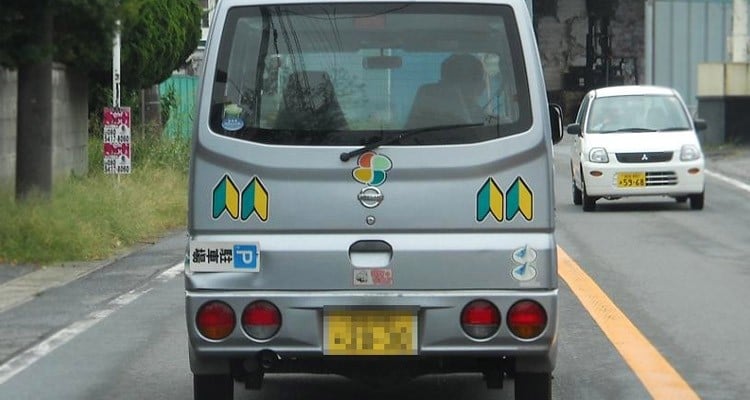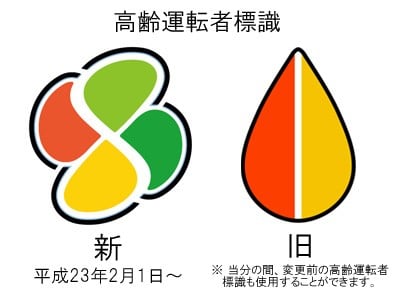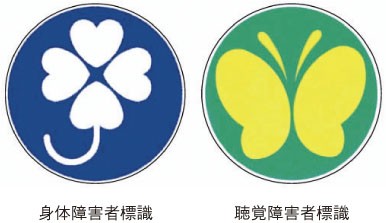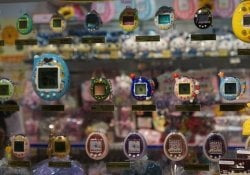In Japan, drivers use specific stickers to indicate a situation. Some of these stickers have mandatory use and serve to indicate whether the person is a new driver, disabled, elderly, etc.
These stickers are often placed on the front and back of cars. In this article, we will go into detail and get to know a little more about these stickers. Our Daily Japan Channel made a video talking a little about these stickers, you can watch them below:
Índice de Conteúdo
Novice driver sticker
In Japan, when you get your driver's license, it is mandatory to wear this green and yellow plate for 1 year, to show that the person is a new driver. That way the other drivers give a little more space and have a little patience with the newbie.
The official name of this tag is shoshinuntenshahyoushiki [初心運転者標識] which literally means "mark of new driver". This brand is also known as wakaba māku [若葉マーク] which literally means "Mark of the green leaf" is even written with the ideogram "若" which means young, it means that you are still inexperienced in traffic.
The interesting thing is that some people, even after 1 year, prefer to leave the sticker on the car to gain more advantage in traffic. Some make jokes, sticking various stickers in different positions.
Others use this sticker even on other automobiles like bicycles, some objects, I have even seen on horses. Wakaba has become a universal symbol for beginners.
The penalty for not having the sticker is 4,000 yen and a point in your wallet. In addition, when driving and seeing a car with this sticker, overtaking is prohibited under penalty of a fine of 5,000 to 7,000 yen and a point in the wallet.

Sticker for Elderly People
People over 70 are encouraged to wear a sticker called Kōreiuntenshahyōshiki [高齢運転者標識] which literally means "Senior Driver Mark". The sticker is also called momiji
Over the years, with old age, people get a little confused in traffic, this sticker serves to indicate to other drivers to have a little more care and patience with the elderly.
In addition, this sticker has other benefits, such as spaces reserved for the elderly. Just as the Japanese call the green leaf beginners sticker, the seniors sticker has gained various names such as: Autumn leaves, dry leaves or falling leaves.
This sticker got a new version in 2011 with the appearance of a 4-leaf clover. In the past it was similar to the beginners' sticker, it was a droplet with the colors orange and yellow.

Sticker for people with physical disabilities
Japan accepts the universal symbol of the disabled, that design of the wheelchair. But Japan also has an original symbol, a blue sticker with a white shamrock in the shape of a heart, with an umbrella stem.
Its name is 身体障害者標識 (shintaishōgaishahyōshiki) and literally means "handicapped etiquette" and covers a larger area than the universal wheelchair symbol.
The penalty for not having the sticker is 4,000 yen and a point in your wallet. In addition, when driving and seeing a car with this sticker, overtaking is prohibited under penalty of a fine of 5,000 to 7,000 yen and a point in the wallet.

The article is still halfway through, but we recommend also reading:
Sticker for people with hearing disease
In addition to the general disability tag, Japan has an exclusive tag for the hearing impaired. A green sticker with a yellow butterfly. She is known as chōkaku shōgai-sha hyōshiki [聴覚障害者標識] which literally means "etiquette for the hearing impaired".
Why the butterfly symbol? In Japanese the word butterfly is pronounced “cho” as well as the word hearing (Chōkaku) or the word impaired of hearing (Chōkakushō).
There is no penalty for not having this sticker. If one car overtakes another with this sticker, it could be fined between 5,000 and 7,000 yen and a point in the wallet.
Training Sticker - Renshuuchuu
A white sticker filled with Japanese words with a yellow stripe looking like a sign is meant to indicate that someone is training driving in traffic. This helps drivers have more patience, it's not a mandatory sign.
This article shows how much Japan cares about driver safety. Hope you enjoyed the article, share it so people know about this security tactic.
If you live in Japan, these plates or stickers can even be found in 100 yen stores. Some are made to nail inside the car, it may be better to find the stickers on an online website or specialized store.







